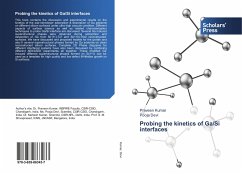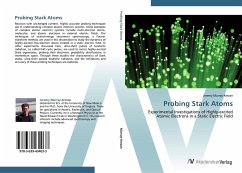
Probing Electrochemistry at the Micro Scale
Applications in Fuel Cells, Ionics, and Catalysis
Versandkostenfrei!
Versandfertig in 6-10 Tagen
45,99 €
inkl. MwSt.

PAYBACK Punkte
23 °P sammeln!
Fuel cells promise cleaner power with less environmental impact than traditional energy conversion technologies. Despite recent technological successes, however, cost remains a commercialization barrier. We are also far from possessing a solid scientific understanding of what really goes on at the nano-scale inside fuel cells. Such understanding is critical for further progress. This text introduces several novel electrochemical techniques to study fuel cells at sub-micron length scales including a microelectrode scaling methodology and an atomic force microscopy impedance imaging technique th...
Fuel cells promise cleaner power with less
environmental impact than traditional energy
conversion technologies. Despite recent
technological successes, however, cost remains a
commercialization barrier. We are also far from
possessing a solid scientific understanding of what
really goes on at the nano-scale inside fuel cells.
Such understanding is critical for further progress.
This text introduces several novel electrochemical
techniques to study fuel cells at sub-micron length
scales including a microelectrode scaling
methodology and an atomic force microscopy impedance
imaging technique that extends our characterization
abilities to the nano-scale. While the techniques
discussed in this book are employed to study fuel
cells, characterizing and understanding
nanostructures is a challenge extending beyond the
fuel cell realm. Many other devices, such as solar
cells, sensors, and thermoelectric converters also
benefit from nanostructured materials. The parallels
between these systems and fuel cells make them
amenable to the same nano-scale visualization and
measurement techniques, offering rich opportunities
for further exploration.
environmental impact than traditional energy
conversion technologies. Despite recent
technological successes, however, cost remains a
commercialization barrier. We are also far from
possessing a solid scientific understanding of what
really goes on at the nano-scale inside fuel cells.
Such understanding is critical for further progress.
This text introduces several novel electrochemical
techniques to study fuel cells at sub-micron length
scales including a microelectrode scaling
methodology and an atomic force microscopy impedance
imaging technique that extends our characterization
abilities to the nano-scale. While the techniques
discussed in this book are employed to study fuel
cells, characterizing and understanding
nanostructures is a challenge extending beyond the
fuel cell realm. Many other devices, such as solar
cells, sensors, and thermoelectric converters also
benefit from nanostructured materials. The parallels
between these systems and fuel cells make them
amenable to the same nano-scale visualization and
measurement techniques, offering rich opportunities
for further exploration.












